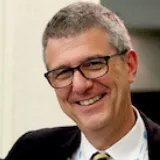It is an honor to be shortlisted for the BHF’s Reflections of Research Competition. It is a great opportunity to showcase our work to the public.
Dr Jacob Ross
26 August 2021
King's researchers shortlisted in national science image competition
Where science and art collide, the competition challenges BHF-funded scientists to showcase their state-of-the-art heart and circulatory disease research through the generation of captivating images.
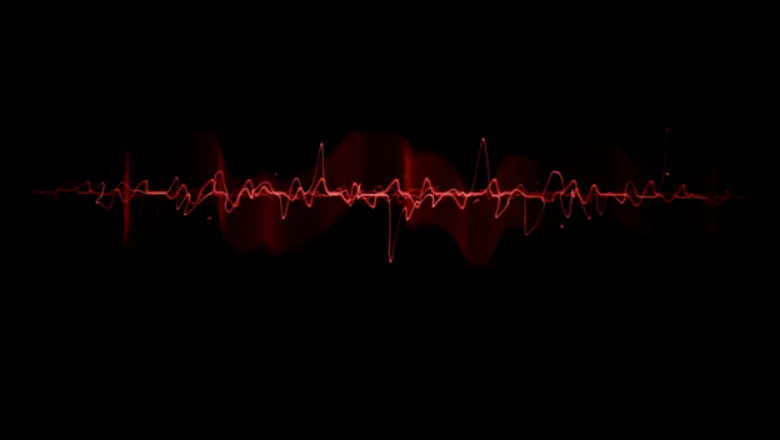
Professor Mauro Giacca, Dr Caroline Roney and Dr Jacob Ross from across the Faculty of Life Sciences & Medicine at King’s have all been shortlisted, alongside Annalisa Bettini from University College London.
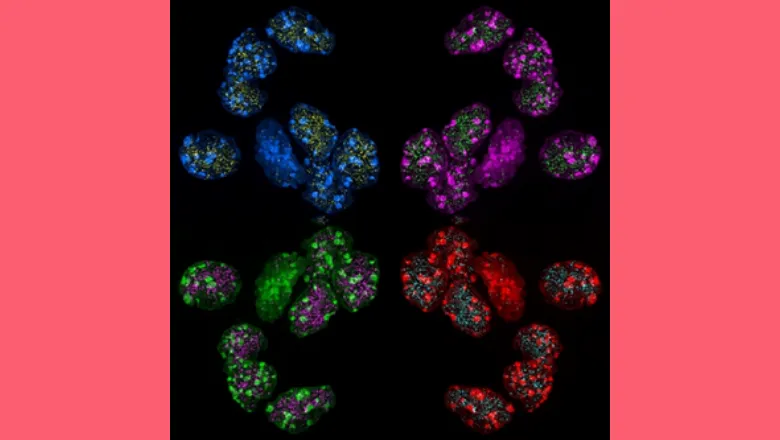
'Silent genes’ was entered by postdoctoral researcher, Dr Jacob Ross, from the School of Cardiovascular Medicine & Sciences. It shows egg-shaped nuclei in a thin slice of heart tissue from a mouse embryo. The nuclei contain the cell’s instruction manual, DNA, which includes instructions for making proteins. The speckled dots pictured are proteins that can bind to DNA to switch genes off and reduce their activity.
Dr Ross is researching a protein that forms part of the casing around each nucleus. This protein protects the DNA and influences the pattern of active and inactive genes. Changes in this protein can lead to cardiomyopathies – conditions of the heart muscle which affect its size, shape or thickness. Cardiomyopathies can make it harder for the heart to pump blood to the rest of the body.
He continued: “We’re studying the role of a protein which has recently been linked to cardiomyopathies. By studying this protein in mice, we can understand more about the processes that lead to these conditions in humans, which could contribute towards personalised treatments in the future.”
‘Fused together’ was submitted by Mauro Giacca, Professor of Cardiovascular Sciences, from the School of Cardiovascular Medicine & Sciences. It shows multiple lung cells that have joined together to create large virus-infected cells.
During the COVID-19 pandemic, Professor Giacca used his understanding of molecular biology to learn more about how the SARS-CoV-2 virus, which causes COVID-19, and how it makes people ill.
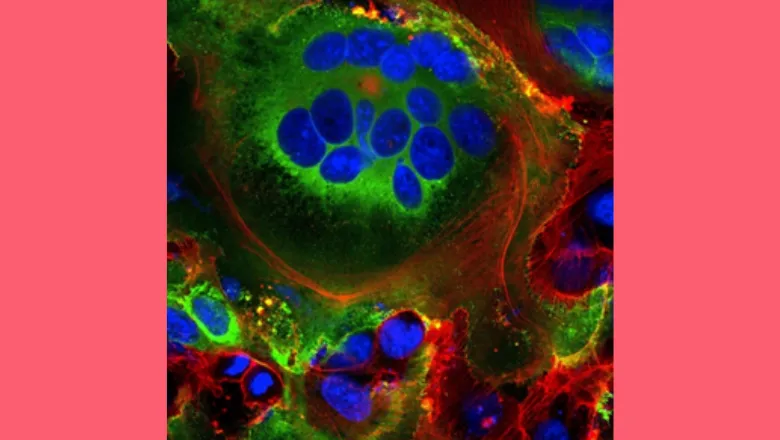
The abnormal cell fusion seen in this image is driven by the ‘Spike’ protein on the virus which causes COVID-19. The virus invades healthy cells when its Spike protein binds to the ACE-2 molecule on a cell’s surface – the ‘entry point’ for the virus. These cells become infected with the virus and display the COVID-19 spike protein themselves. This then triggers a series of events that causes infected cells to reach out and fuse with neighbouring cells.
It’s fantastic to be shortlisted for the Reflections of Research competition and have our COVID-19 research showcased. Like many BHF funded researchers, we adapted our work early in the COVID-19 pandemic to help answer the most pressing research questions. We have been testing over 3,800 approved drugs for their blocking effects on this cell fusion mechanism – and have identified one called Niclosamide. It is currently being tested as a treatment for COVID-19 in a few clinical trials across the world. We hope this will help hospitalised patients in their recovery from COVID-19.
Professor Mauro Giacca
‘Atrial Digital Twin’ was entered by Dr Caroline Roney, a postdoctoral researcher in the School of Biomedical Engineering & Imaging Sciences. It shows the process of recreating a digital replica of the atria - the upper chambers of the heart - of three patients. This is used to visualise conditions where the heart beats irregularly, like atrial fibrillation, which is caused by the chaotic firing of electrical impulses in the atria.
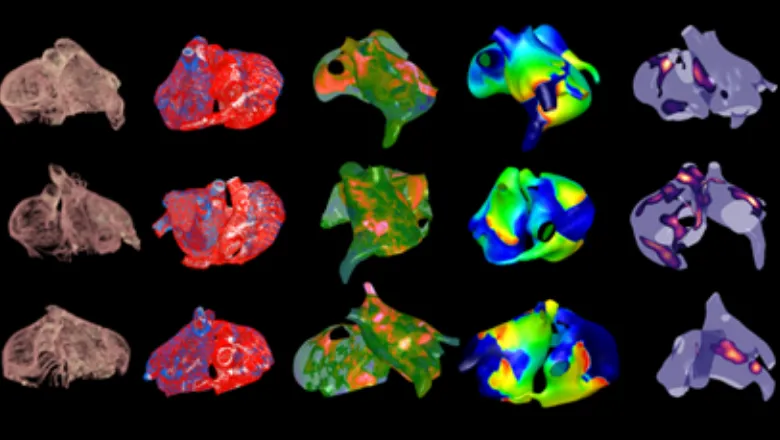
Starting with images captured from MRI scans (far-left column), more detailed information is added to the images as we move from left to right to look at different aspects of the structure and function of the heart.
This digital reconstruction allows Dr Roney to run simulations of the electrical impulses in patients with atrial fibrillation and heart failure and select optimal treatments that will help reduce abnormal electrical signals in the heart. Over 1.5 million people in the UK have been diagnosed with atrial fibrillation. It is one of the most common forms of abnormal heart rhythms and a major cause of stroke.
Every year reflections of research celebrates the vital research that the BHF supports – I'm really excited that my image has been shortlisted. These digital recreations can be used in virtual clinical trials. This is exciting as it will help reduce the large waiting list for treatment for irregular heart rhythms and lead to better, longer lasting treatments.
Dr Caroline Roney
Dr Roney added: “This research is part of a collaboration between the Cardiac Electro-Mechanics Research Group at King’s College London, which is supported by the BHF and Professor Ed Vigmond’s lab at the University of Bordeaux.”
About the British Heart Foundation
With donations from the public, the BHF funds ground-breaking research that will get us closer than ever to a world free from the fear of heart and circulatory diseases. A world where broken hearts are mended, where millions more people survive a heart attack, where the number of people dying from or disabled by a stroke is slashed in half. A world where people affected by heart and circulatory diseases get the support they need. And a world of cures and treatments we can’t even imagine today. We are backing the best ideas, the brightest minds and the biggest ambitions - because that’s how we’ll beat heartbreak forever. Find out more at bhf.org.uk.


